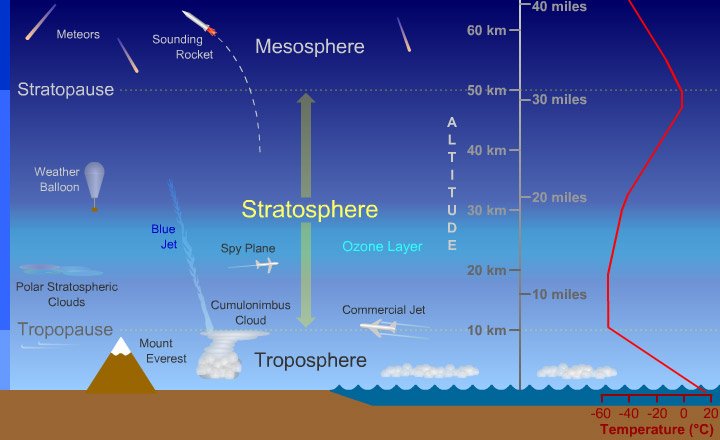MessageToEagle.com – Scientists have discovered strange and unexpected changes in Earth’s stratosphere. The disruption to the wind pattern has not been observed in more than 60 years of record-keeping.
Called the “quasi-biennial oscillation”, this disruption to the wind pattern did not have any immediate impact on weather or climate as we experience it on Earth’s surface.
However, these wind changes raise a number of important questions.
If a pattern holds for six decades and then suddenly changes, what caused that to happen? Will it happen again? What effects might it have?
Winds in the tropical stratosphere, an atmospheric layer that extends from about 10 to 30 miles above Earth’s surface, circulate the planet in alternating easterly and westerly directions over roughly a two-year period.

Westerly winds develop at the top of the stratosphere, and gradually descend to the bottom, about 10 miles above the surface while at the same time being replaced by a layer of easterly winds above them. In turn, the easterlies descend and are replaced by westerlies.
This pattern repeats every 28 months. In the 1960s scientists coined it the “quasi-biennial oscillation.” The record of these measurements, made by weather balloons released in the tropics at various points around the globe, dates to 1953.
The pattern never changed — until late 2015. As the year came to a close, winds from the west neared the end of their typical descent. The regular pattern held that weaker easterly winds would soon replace them. But then the westerlies appeared to move upwards and block the downward movement of the easterlies. This new pattern held for nearly half a year, and by July 2016 the old regime seemed to resume.
See also:
Two Giant Mysterious Blobs Beneath Earth’s Surface Puzzle Scientists
Is World’s Largest Canyon Hidden Under Antarctic Ice Sheet?
Mysterious Whistle Sound From The Caribbean Sea Heard In Space
The quasi-biennial oscillation has a wide influence on stratospheric conditions. The amount of ozone at the equator changes by 10 percent between the peaks of the easterly and westerly phases, while the oscillation also has an impact on levels of polar ozone depletion.
NASA Scientists are no observing the change and focus on studying both its causes and potential implications.
There are currently two hypotheses for what could have triggered it. One possibility is the particularly strong El Niño in 2015-16 and the second option is the long-term trend of rising global temperatures.
MessageToEagle.com







